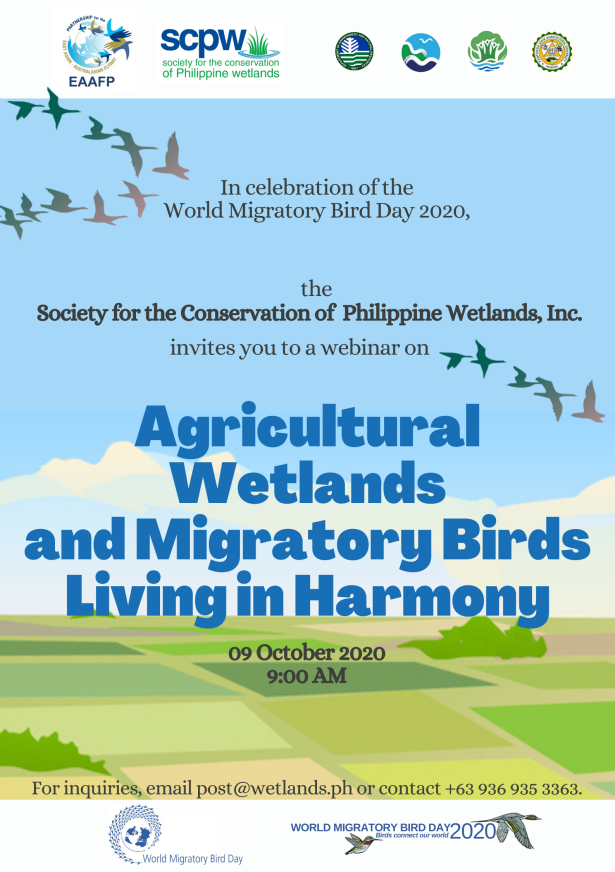
World Migratory Bird Day Webinar poster ©SCPW
Event title:
Migratory Birds and Farming Communities in Harmony
Organizer:
The event was organized by the Society for the Conservation of Philippine Wetlands, Inc. In partnership with the following:
- Biodiversity Management Bureau – Department of Environment and Natural Resources
- Ecosystems Research and Development Bureau – Department of Environment and Natural Resources
- Department of Environment and Natural Resources – Region 3
- Pampanga State Agricultural University
Participants:
The live webinar had more than 350 viewers coming from not just the Philippines but from other countries as well across available online platforms (SCPW’s Website, Facebook, and YouTube). The actual viewers represented about 60% of pre-registrants that reached 560. The recorded version was uploaded to the said platforms so that other interested individuals can still view the webinar even after the actual event.
Outcome:
Based on the questions raised and the comments gathered, there was an increased awareness on the link between nature and well-being of people among the viewers particularly those in the farming and natural resources sector. The recommendations from the National Government Agencies as well as from the academe to formulate a management policy and establish a multi-stakeholder body to manage the Candaba Wetlands will be explored. This will promote the integration of wetland conservation in their local land use plans.
Summary:
On 9 October 2020, the Society for the Conservation of Philippine Wetlands, Inc.(SCPW) with support from the East Asian-Australasian Flyway Partnership (EAAFP) conducted a webinar to highlight how farming communities and migratory birds can be in harmony with each other.
The webinar primarily reached out to local government officers in agricultural and environment and natural resources offices of local governments in the Candaba Wetlands, so that they understand the link between conserving the wetland and the health and well-being of people. Agricultural students, farmers, bird enthusiasts, and other interested individuals were also encouraged to join the webinar. The live webinar had more than 350 viewers coming from not just the Philippines but from other countries as well across available online platforms (SCPW’s Website, Facebook, and YouTube). The recorded version was uploaded to the said platforms so that other interested individuals can still view the webinar even after the actual event.
Opening Preliminaries
The event started with a brief background about the event and the theme of World Migratory Bird Day 2020 which is “Birds Connect Our World”, which was given by the host and facilitator, Ms. Amy M. Lecciones, Executive Director of SCPW. She thanked the EAAFP and the various agencies under the Department of Environment and Natural Resources, as well as the Pampanga State Agricultural University for their support to the event.
Mr. Celestino Ulep, President of the SCPW welcomed the participants to the webinar. Messages highlighting the importance of conserving wetlands and biodiversity, particularly migratory birds and their agency’s efforts in line with the focus of the webinar were delivered by the following partners:
- Henry A. Adornado, Director of the Ecosystems Research and Development Bureau (ERDB).
- Paquito Moreno, Jr., Regional Executive Director of the Department of Environment and Natural Resources – Region 3
- Honorio Soriano, Jr., President of Pampanga State Agricultural University
Of note was the recommendation to establish a policy or a management strategy for the conservation of the Candaba Wetlands.

Mr. Celestino Ulep of SCPW giving the Welcome Remarks ©SCPW
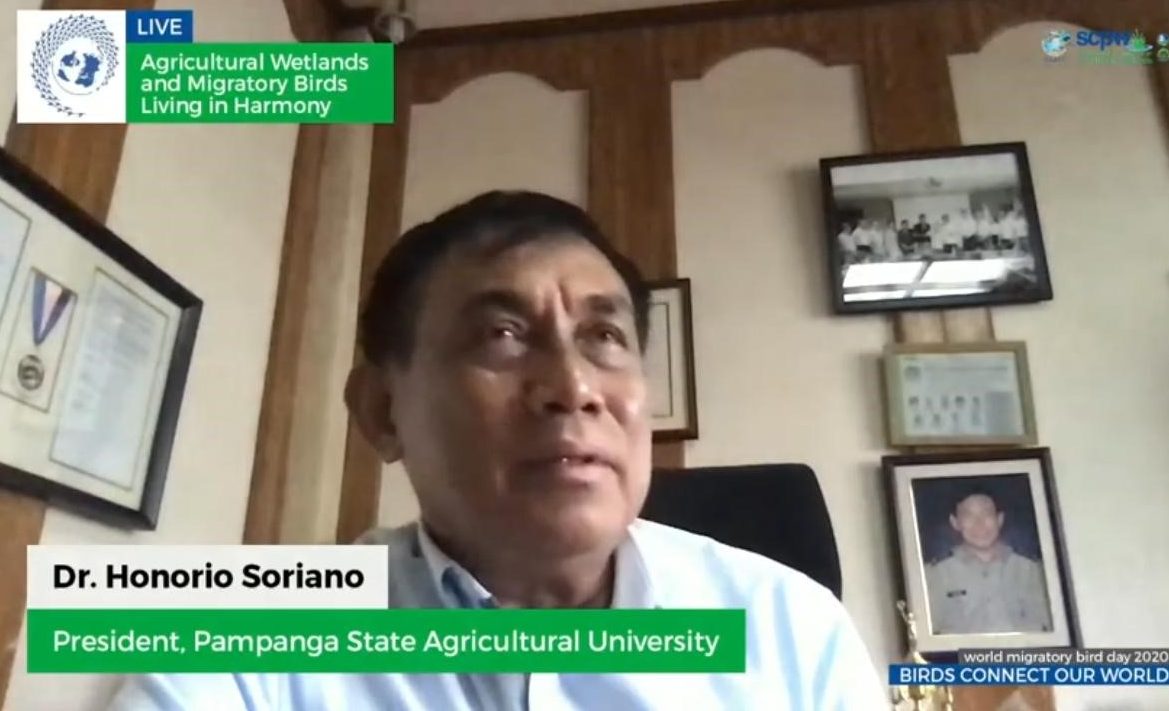
Messages from partners – Dr. Honorio Soriano, Jr. of PSAU ©SCPW
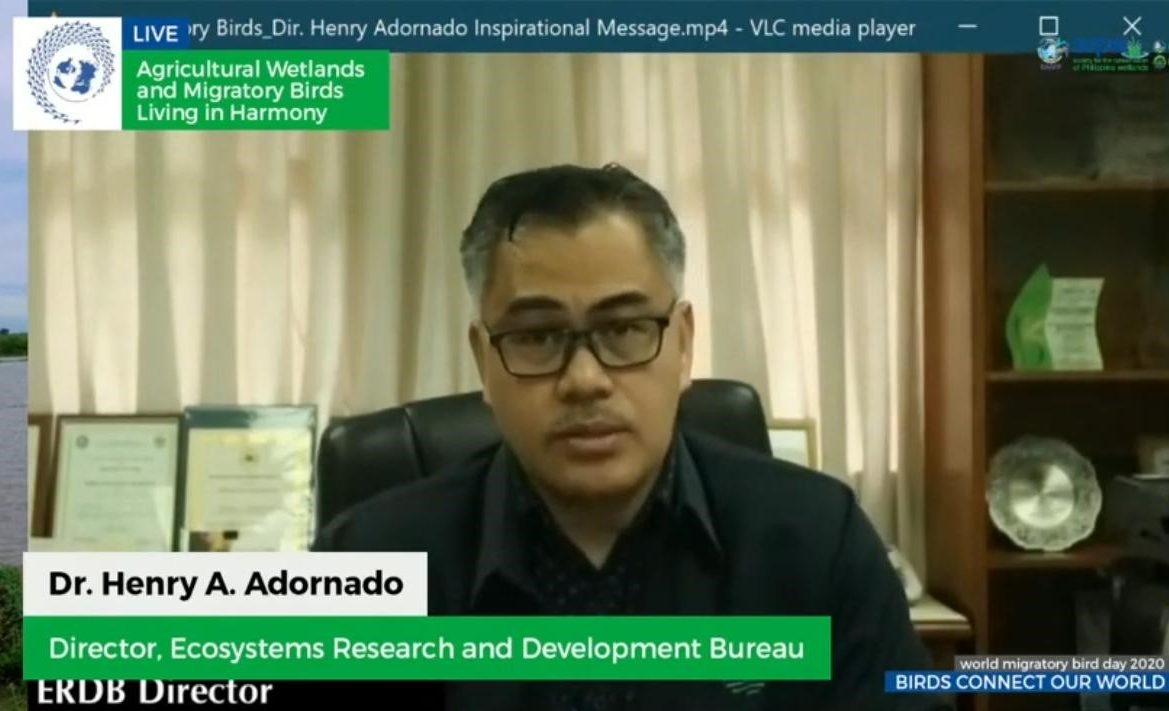
Messages from Partners: (From to Bottom) Dr. Henry Adornado of ERDB ©SCPW
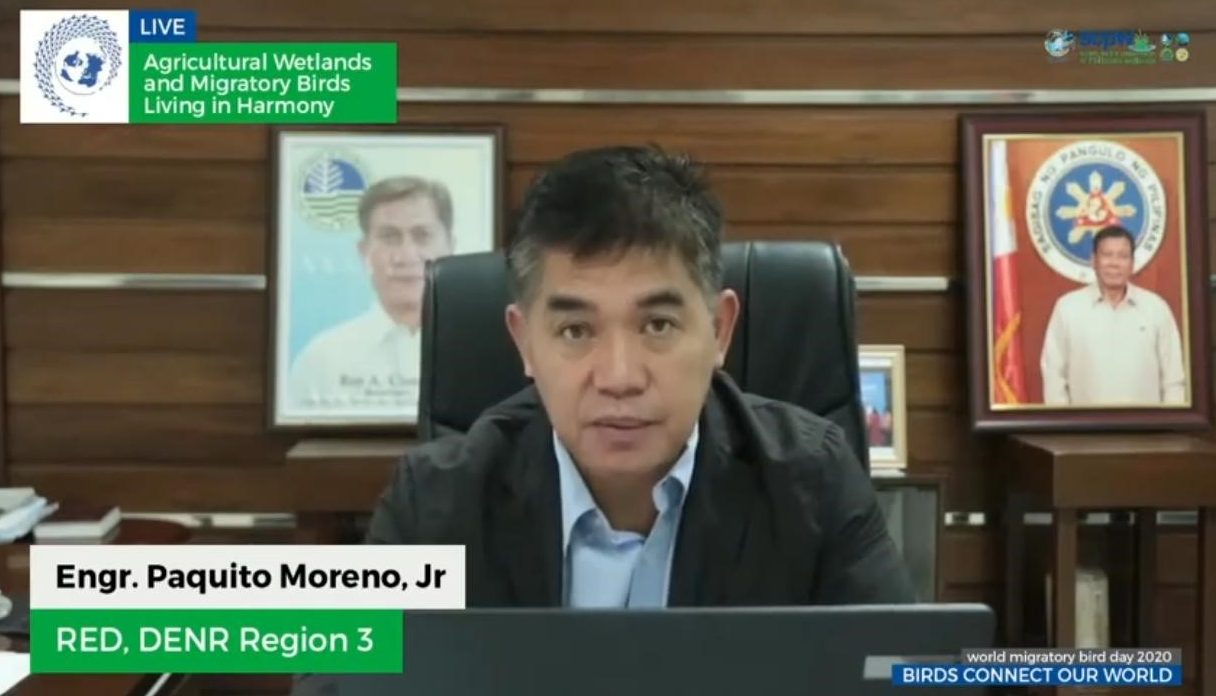
Messages from Partners – Engr. Paquito Moreno, Jr. of DENR-R3 ©SCPW
Audio-Visual Presentations
- Wetlands and Ramsar Convention
An AVP about wetlands, its importance, the threats as well as programs and projects to conserve them was shown. The AVP also focused on the efforts in protecting wetlands like the Ramsar Convention on Wetlands by helping people work together to conserve these resources.
- Journey of a Migratory Bird and East Asian Australasian Flyway
This animated video was originally in English and part of the support provided by EAAFP was to produce a version in Tagalog/Filipino. This was about the journey of a young Great Knot, which is considered by IUCN as an endangered bird species. The video showed how far these birds migrate, and how they overcome threats during the migration period. At the end of the video, the audience are encouraged to take actions in conserving wetlands in order to protect Great Knots and other migratory birds.
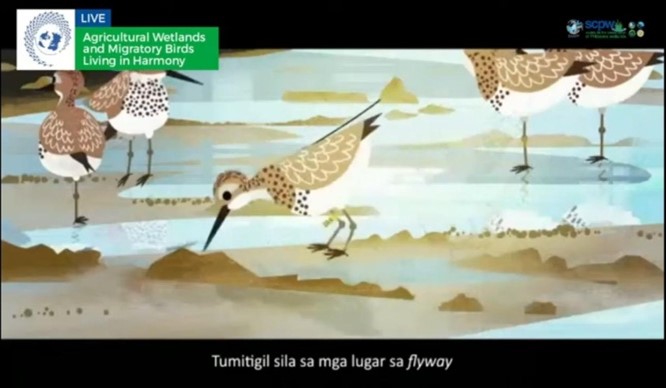
AVP about the Journey of a Migratory Bird ©SCPW
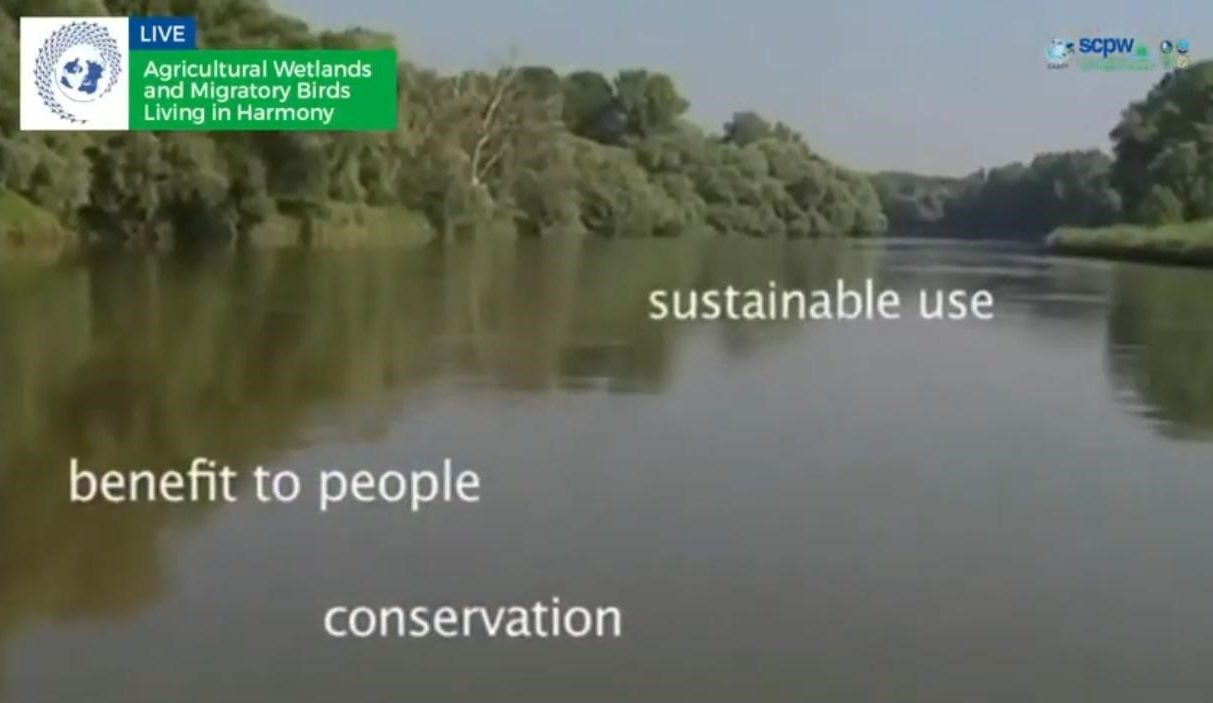
AVP on Wetlands and Ramsar Convention ©SCPW
Lectures/Presentations
- East Asian – Australasian Flyway (EAAF) and The Importance of Migratory Birds
Dr. Simplicia A. Pasicolan, Chief of Urban Ecosystem Research Division, ERDB – DENR
Dr. Pasicolan’s presentation focused on bird migration and the major flyways including EAAF where Philippines is a part of, to give the audience a clearer understanding of why migratory birds are important. She also discussed related Multilateral Environmental Agreements like Ramsar Convention on Wetlands, Convention on Migratory Species of Animals (CMS), and Convention on Biodiversity (CBD). Dr. Pasicolan also presented the activities and programs of ERDB’s contribution to wetlands and biodiversity contribution through research about bird migration.
- Waterbirds and Managing Health Risks
Rizza Araceli F. Salinas, DVM, Wildlife Resource Division, BMB –DENR
Dr. Salinas tackled some of the common diseases related to birds such as bird flu and clarified some of these issues. Dr. Salinas also offered some measures to minimize interaction with wild and domesticated birds, like implementation of Good Animal Husbandry Practices (GAHUP) and improving biosecurity of commercial and even backyard farms. She also discussed the Avian Influenza Protection Program (AIPP) provided by the Department of Agriculture which seeks to help prevent the entry of Avian Influenza in the country as well as disease response in the event of an incursion. Roles and efforts of national and local government and agencies towards strengthening the prevention and control of zoonotic diseases were also explained, particularly in the context of farming communities such as the Candaba Wetlands.
- The Candaba Wetlands: Rice Farming Communities and Migratory Birds – How They Can Co-Exist?
Dr. Gerald Salas, Director of Tamarind Research and Development Center, Pampanga State Agricultural University
Dr. Salas’ presentation discussed the bio-physical and social characteristics of the Candaba wetlands and its relation and significance to the EAAF. He presented the importance of migratory birds in different ecosystems which directly or indirectly affects human beings. Several factors affecting the interaction of migratory birds and rice fields were also explained. Dr. Salas then focused on the specifics of how humans can co-exist with the birds including water management, organic agriculture, rice plant and field structure, and various management schemes. It was also highlighted that Candaba wetlands need nature-based solutions and multi-stakeholder approaches in its management. Further, he recommended that a multi-sectoral Council be organized to establish a management policy and strategy for the Candaba Wetlands. Dr. Salas concluded his presentation by reiterating that the best way to take care of the future is by taking care of the present.
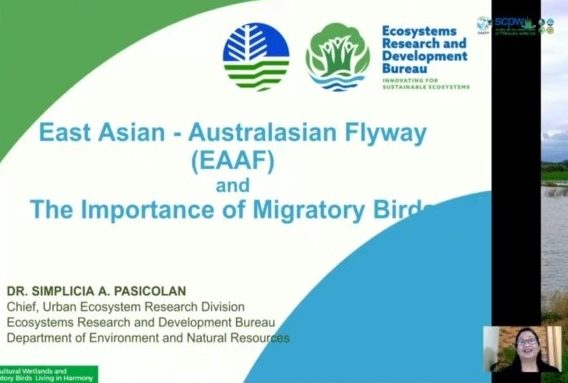
Dr. Simplicia Pasicolan discussing the East Asian-Australasian Flyway and the Importance of Migratory Birds ©SCPW
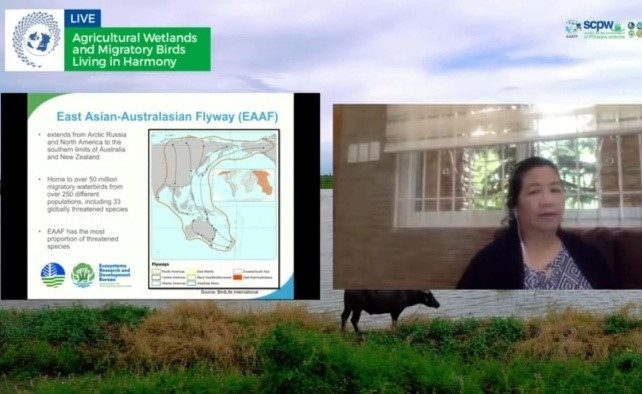
Dr. Simplicia Pasicolan discussing the East Asian-Australasian Flyway and the Importance of Migratory Birds ©SCPW
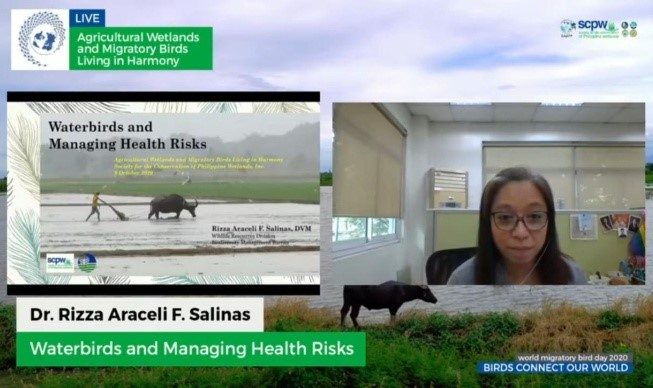
Dr. Rizza Araceli Salinas talking about Waterbirds and Managing Health Risks ©SCPW
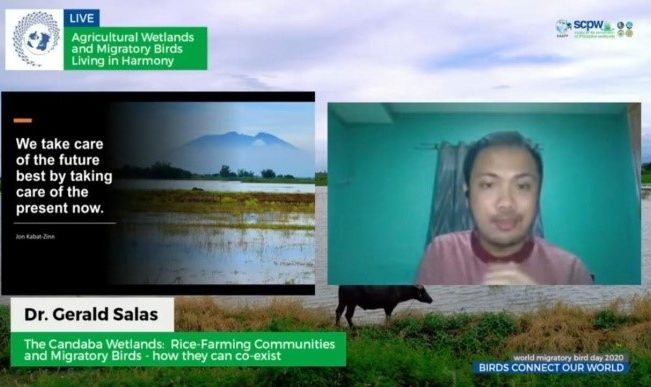
Dr. Gerald Salas presenting the Candaba Wetlands and how rice farming communities and migratory birds can co-exist ©SCPW
Open Forum
After the presentations, the resource speakers were given time to answer some pre-registration and live questions from the participants/audience.
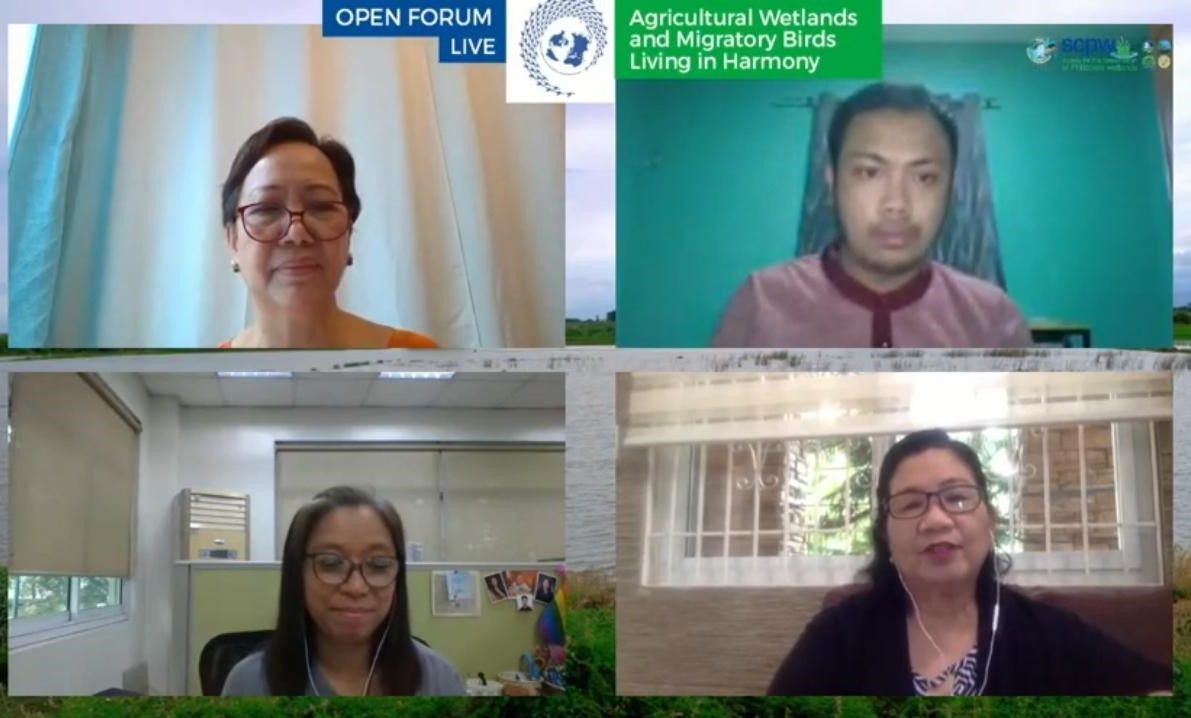
Ms. Amy Lecciones of SCPW (Top Left); Dr. Gerald Salas of PSAU (Top Right); Dr. Rizza Araceli Salinas of BMB (Bottom Left); and Dr. SimpliciaPasicolan of ERDB (Bottom Right) ©SCPW
Wrap-up and Closing Remarks
The closing remarks was given by Atty. Theresa M. Tenazas, the OIC-Chief of the Wildlife Resource Division and Head of Legal Unit of the Biodiversity Management Bureau – DENR. She highlighted the importance of conservation of migratory bird habitats, ecological connectivity, and coordination of people and communities. She stressed that co-existence of farming communities and migratory birds can be achieved if the significance of wetlands is recognized.
Atty. Tenazas also thanked the organizers, partners, and participants and encouraged that they continue contributing to environmental conservation efforts.
Before finally closing the event, Ms. Lecciones informed everyone that Certificates will be sent after they fill up the evaluation form. She also emphasized that the SCPW will be following up on the recommendations of the webinar and that the Great Knot Filipino version of the video as well as the recording of the event will be made available through the SCPW Facebook page, the SCPW website and their Youtube channel.
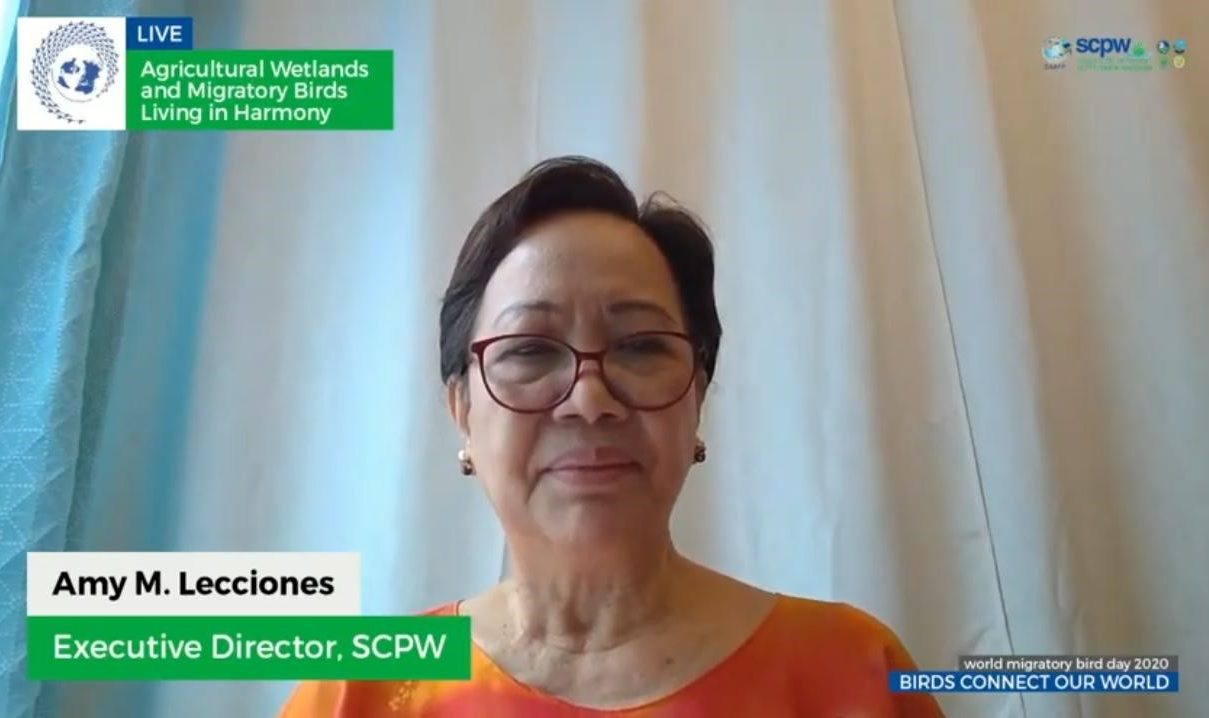
Ms. Amy Lecciones, Executive Director of SCPW serving and Facilitator for the event ©SCPW
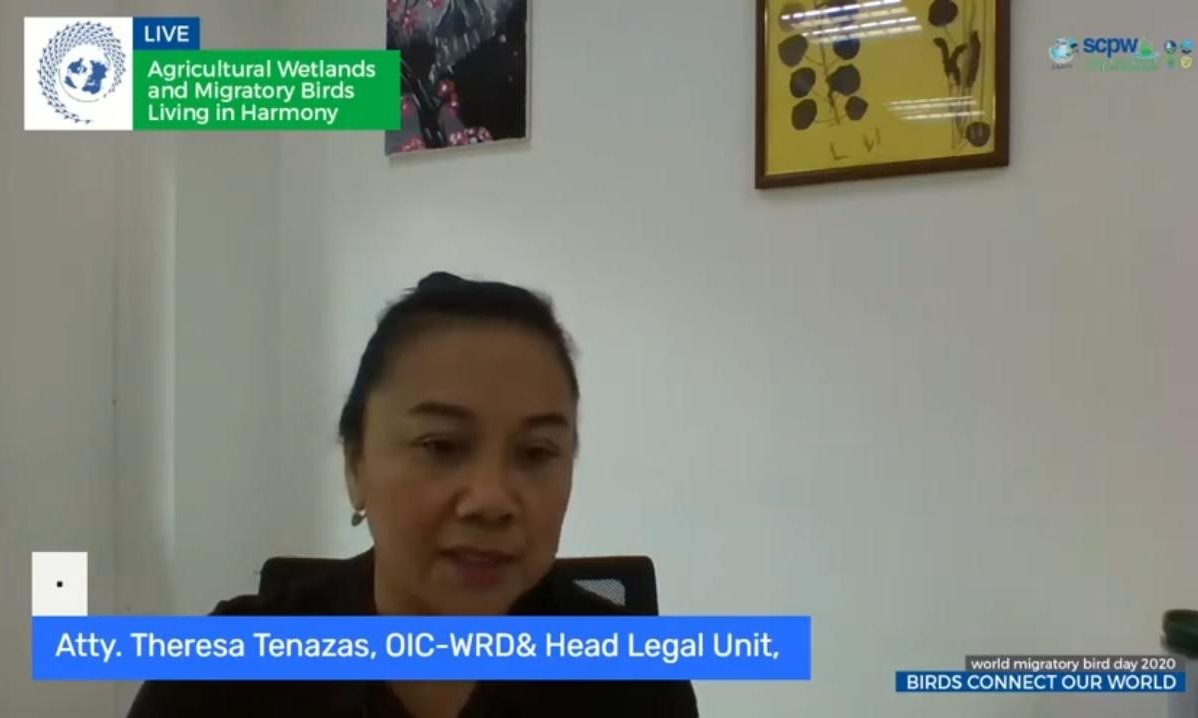
Atty. Theresa Tenazas of the Biodiversity Management Bureau giving the closing messages ©SCPW
Watch the whole webinar:
Watch the World Migratory Bird Day in Tagalog.
The recorded version of the webinar can be seen at the SCPW pages in these following online platforms (Website / Facebook / Youtube)
For more photographs, visit our Flickr album.




